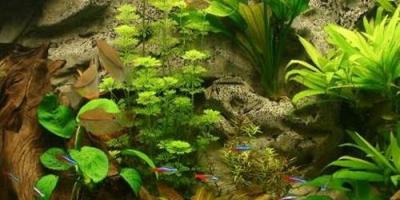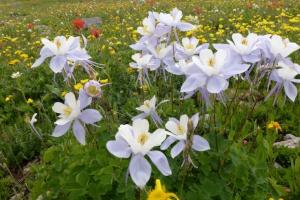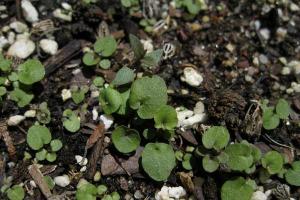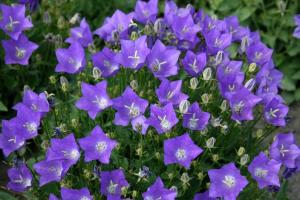The name wolfberry refers to several plants at the same time. This is what they call belladonna, buckthorn, and raven's eye. But most often this is what is called wolf's bast or common wolfberry. In appearance, it looks like a low-branched deciduous shrub, the maximum height of which is 1.2 m. The plant is a representative of the Volchnikov family. The bush produces narrow dark green leaves, which are attached by short petioles at the very top of the shoots. The bark of the plant is very durable and has a dark brown, almost black tint, which gave rise to the plant being called bast.
IN middle lane Russian plant blooms in early spring, before the leaves appear. The flowers can be white or pink, which have a pleasant aroma, but if inhaled for a long time they cause headache. The plant is pollinated by bees and the collected honey is not toxic. In mid-summer, bright red fruits ripen.
Chemical composition of berries
Beautiful appearance berries attract attention, but you should know that wolfberry is a poisonous plant. In the old days, arrow spears were lubricated with its juice before going hunting.
Description chemical composition, which makes the plant so poisonous:
- meserein - has a strong irritant effect, after which redness and small pimples, and when inhaled bark dust has an irritating effect on the mucous membrane of the respiratory tract;
- Daphnin glucoside - has antibacterial properties, but at the same time causes bleeding.
Wolfberry also contains tannins, flavonoids, mineral salts, wax, and gum.
But thanks to its special composition, the plant has not only poisonous properties, but also medicinal. Therefore, it is widely used in homeopathy. In pharmacies you can purchase products made from wolfberry, which effectively treat skin diseases, as they relieve inflammation and eliminate different kinds suppuration.

Consequences of eating wolfberry
Wolfberry berries have a pronounced burning taste, so it is unlikely that anyone will be able to eat them in large quantities. But to intoxicate the body, it is enough to consume 3 berries, which causes poisoning of the digestive system. As a result, a person experiences the following symptoms:
- nausea;
- excessive salivation;
- stomach cramps;
- diarrhea;
- limb spasms;
- burning sensation in the mouth;
- swelling of the oral cavity;
- vomit;
- dizziness.

When small particles of the plant come into contact with the mucous membrane of the eye, conjunctivitis develops. Under the influence of an intoxicant it is affected nervous system human, metabolic processes deteriorate, and sometimes renal failure occurs.
An adult body is able to resist the effects of poison, but if a child eats wolfberry, serious health consequences can occur, including death, depending on the amount of fruit eaten.

First aid for poisoning
After the first symptoms of poisoning appear, you need to know what first aid should be provided to the victim before the doctor arrives in order to avoid more serious complications:
- 1. Thoroughly rinse the stomach with a weak solution of potassium permanganate 0.01% per 1 liter of water, which will help remove undigested residues from the stomach wolf berries.
- 2. It is necessary to provide the person with plenty of fluids, which will help quickly remove toxins from the body.
- 3. During the first hour after eating the berries, you need to drink activated carbon three times at the rate of 1 tablet per 10 kg of weight.
- 4. To stop vomiting, you should swallow small pieces of ice.
- 5. In case of defeat skin they need to be washed under running water, and then with a solution of potassium permanganate in a ratio of 0.02% per 1 liter of water.
If the body is intoxicated with wolfberries, it is prohibited to carry out therapy with diuretics or laxatives, as this will further complicate the situation.

Mulberry ( Mulberry tree) - beneficial features and application
Medicinal properties
Since ancient times, wolf berries have been used in folk medicine for certain diseases. They have analgesic, anti-inflammatory and antibacterial properties, so their use is effective for rheumatism, gout, and radiculitis. In some cases, the use of wolfberry preparations is allowed for the treatment of scrofula, purulent tonsillitis, esophageal tumors and thrombophlebitis.
For treatment, it is necessary to collect the bark of the bush before the sap begins to flow in the branches, so the optimal period for this is January-February, and the berries must be picked when ripe. The collection of raw materials must be carried out while observing certain precautions:
- work only with gloves and a respirator;
- after completing the procedure, wash your hands thoroughly several times with soap;
- dry separately from other products and out of the reach of children.
Before starting treatment with wolfberry-based drugs, it is recommended to consult a doctor who will determine the dosage and duration of therapy based on individual characteristics patient.
In most cases folk remedies Wolfberry is used externally. For treatment skin diseases, inflammation and suppuration, it is recommended to prepare a tincture with alcohol:
- pour 70 g of crushed dry wolfberry bark into a container;
- pour 250 ml of medical alcohol;
- Close the lid tightly and leave for 14 days;
- Apply as a lotion to problem areas of the skin.

Based on this tincture, you can prepare an ointment for the treatment of gout and rheumatism. This requires 1 part medicinal tincture Mix with 2 parts butter; this product should be stored in the refrigerator, separate from other products. Lubricate problem areas three times a day.
Wolfberry is a plant that can be harmful if used improperly, but if all precautions are taken, it is an effective medicine and provides significant health benefits. IN Lately The shrub remains on the verge of extinction, therefore it requires special treatment; it should not be used without certain knowledge in this area.
Wolfberry, according to Wikipedia, is not one clearly defined plant. This phrase is a collective name for many plants whose fruits are toxic or irritating. The group, popularly called “wolfberry,” includes wolfberry, crow’s eye, crowberry, belladonna, red elderberry, castor bean, honeysuckle honeysuckle and others.
Belladonna or belladonna
So a beautiful word, which translated means “beautiful lady,” is the name of the plant whose poisonous berries can cause the death of a person who eats it. Both the roots of this plant and its leaves are also harmful. Even just touching belladonna causes skin damage similar to a chemical burn. That is why people gave belladonna another name - wolf berry. The plant itself can grow up to one and a half meters in height. The famous belladonna Atropa, about which there is a legend. After all, the word Atropa comes from Atropos - the name of one of the three Fates. It was these Greek goddesses who allegedly held magical scissors in their hands with which they cut the threads of human lives. But in real life Wolfberry can suddenly end the lives of not only people, but also animals.
St. John's wort

Speaking about poisonous berries, we should remember others, such as the fruits of lily of the valley, juniper Tamariscifolia, and St. John's wort. And these plants ripen bright, attractive berries that just beg to be eaten. Many are confused by the fact that St. John's wort and lily of the valley are medicinal plants and should not be fraught with danger. However, the fruits of these plants are inedible berries. For example, St. John's wort is often used as a hedge in gardens and courtyards. You can also find this shrub in forests. When the berries ripen, they first turn red and then turn black or purple. medicinal plants they are used in medicine. But it is not recommended to eat attractive berries just like that - they are poisonous.
Nightshade

The Solanaceae family includes potatoes, eggplants, tomatoes, peppers, physalis and nightshade itself. Nightshades also come in several varieties. Black nightshade, an annual herbaceous plant, is widely represented in central Russia. It is found in ravines and gardens, on the banks of reservoirs and in bush thickets. The above-ground part of the plant is often used to make medicines. But you should be careful with berries. This plant is not as simple as it might seem at first glance. After all, the ripe fruits of nightshade have been used by people for food since ancient times, both raw and as a filling for pies. But unripe berries can cause severe poisoning. Therefore, you should be extremely careful if this insidious plant grows nearby. When picking berries for a pie, you need to carefully select only ripe fruits of a bright black color.
Red elderberry
Both privet and red elderberry are not a rare old-timer in yards, especially in rural areas. There is a belief that the clusters of bright berries from these plants repel mice and rats. Perhaps that is why our ancestors planted these shrubs so actively. And in the spring they delight the eye with their beautiful blooms. But you absolutely cannot eat their berries - they are poisonous! This is especially true for fresh fruits hanging on branches and tempting those who do not know about the dangers of these beautiful berries. Of course, it’s better to just uproot this elderberry out of harm’s way! But here lies the problem: this shrub is so tenacious that next year, from a small piece of root remaining in the ground, a new plant will again reach for the sun.
For modern residents of the metropolis, a walk through the forest is an incomparable relaxation and joy. Fresh air, the tart smell of foliage heated in the sun creates a special mood, returns energy and vitality.
It’s also so interesting to organize a “silent hunt” for mushrooms and berries! With mushrooms, everything is more or less clear: we are regularly informed and reminded about dangerous species. But with berries it’s more difficult. They all seem harmless, and at first glance it is very difficult to distinguish poisonous berries. Therefore, very often in the summer you can read in the news about poisoning with compote from or about severe intestinal disorders after eating fresh ones.
Let's figure out what poisonous and inedible berries are in our strip.
Wolfberry (wolfberry)
This is a low shrub that blooms with white or light pink flowers, similar to lilacs. The fruits appear directly on the stem and ripen in July. Externally, wolfberry is very attractive: bright red, shiny, juicy. Children are eager to try these beautiful fruits. This is not difficult, because the bush is grown as ornamental plant around houses, in city parks and gardens.
However, the entire wolfberry is poisonous - the leaves, bark, and fruits are dangerous because they contain the toxic substance daphnin. Touching the bark or rubbing the leaves may cause red, itchy spots and blisters on the skin. With more severe injuries, necrosis of individual areas of the skin occurs.
Wolfberry also leads to severe food poisoning - for this it is enough to eat only a dozen fruits. There is a strong secretion of saliva, stomach pain, vomiting and cramps, rising heat. The functioning of the intestines and kidneys is disrupted. Recovery, even with timely help, takes a long time.
Belladonna
This beautiful bush with dark green leaves that blooms with single large violet or purple flowers. The fruits are black, slightly flattened, similar in size and shape to small cherries. The taste is sweet and juicy.
Belladonna berries take first place in toxicity, since they contain three types of poison: atropine, scopolamine and hyoscyamine. Even a small amount of fruit can result in a slow and painful death.
Snowberry
This is an ornamental, extremely frost-resistant plant. It blooms all summer with pink elegant inflorescences, and in September-October it begins to bear fruit with white juicy balls about a centimeter in diameter. The berries decorate the bush for a very long time - until mid-winter.
Snowberry fruits are very poisonous and can be fatal.
Krushinnik (magpie berries)
This shrub blooms with small greenish-white flowers, in place of which small berries then appear. Unripe fruits are light red, while ripe ones are black. Eating buckthorn berries is not fatal, but it does lead to fairly severe nausea and vomiting.
Low bushes of this plant are found only in the forest; they can be confused with blueberries or blueberries. But it is not difficult to distinguish: the berry grows singly, in the middle of the four-leaf corolla it has a very unpleasant smell. One or two berries do not pose a great danger, but more can lead to vomiting and diarrhea.
Both crushin and affect only the gastrointestinal tract. Such toxic but non-lethal berries also include the well-known honeysuckle.
Adults, as a rule, are careful and do not try unfamiliar wild specimens. But children can be tempted by the beautiful colorful fruits.
What to do if a child manages to try poisonous berries?
First, you need to induce vomiting as quickly as possible. Before this, give the child a little weak drink to oxidize the stomach.
After the stomach has been cleared, it is necessary to give the child a mixture of crushed activated carbon and water.
If possible, you should do an enema to cleanse your intestines.
If there is inflammation on the skin, wash the damaged areas with a solution of potassium permanganate.
After providing first aid, be sure to go to the hospital.
Bast is a shrub plant, in the wild not exceeding 1 m in height, but when favorable conditions the bush can reach 2.5 m. In spring, pink flowers, which are located in the axils of the leaves. Most often, this plant can be found in shaded areas at the edge of the forest.
What does a wolf's bast look like?
The wolf's bast shrub is a low plant about 1 m high, in autumn and spring period The shoots of the bush are colored gray-brown; in some cases, the color of the bark can be yellowish-gray. As a rule, in the spring the plant produces young shoots that have a more grayish bark color and, in addition, many young shoots may be covered with brownish spots. But, at the same time, this plant has few branches and occupies a fairly compact area. The leaves, attached to the shoots with the help of short petioles, are elongated, ovoid in shape, sometimes they can be narrower, somewhat reminiscent of a lancet. When flowers form in the leaf axils (usually flowering in central Russia begins in April–May) in the southern regions of Russia, flowering may begin earlier. The flowers are collected in bunches and most often have a pinkish tint, less often white.
After flowering the fruits appear:
- Oval shape;
- Reddish in color;
- Externally looking appetizing and juicy.
This plant can be found in floodplain forests near the banks of reservoirs, as well as on the edges of forests. Prefers soils rich in nutrients, this plant is distributed throughout almost all of Europe and Asia Minor.

The berries usually fit tightly together and tightly grip the branch. But under no circumstances should you eat them, as they are poisonous; only 10–12 berries are enough to cause fatal poisoning.
There are more than 50 species of this type of plant: there are evergreen plants, there are semi-deciduous ones, which grow mainly in warm regions not only of Russia, but also in warm regions of other countries. There are species that tolerate harsh climates well; such plants can grow in more northern regions and in the mountains.
What color are wolf bast berries and what is the plant?
Wolf's bast is poisonous plant, but, nevertheless, very beautiful, especially in the spring, when flowering begins. The peculiarity of the wolf's bast is that first beautiful flowers appear on it (somewhat reminiscent of the colors of lilac); the shoots of this plant during the flowering period are covered with pinkish-white flowers.
If you stay near the plant for a long enough time, the smell from the flowers can cause a headache.
The flowers of this plant are collected in bunches that somewhat resemble nests (to be sure of this, it is best to look at the pictures). At the same time, the flowers of some species of this plant exude a delicate aroma. But at the same time, if you come closer to enjoy its smell, the pleasant smell will suddenly change to a less pleasant one.
The plant itself:
- It is a bush.
- In wild growing conditions it rarely exceeds a height of 1-1.5 m.
- If the plant is grown for decorative purposes, then the height of the bushes with proper care can reach a height of up to 2 m.
The plant grows best in more acidic and damp soils that are rich in nutrients. In principle, they are grown on almost any soil, but it is important to provide sufficient moisture and fertilizing, and then the plants will delight people with their beautiful flowers for many years. To verify this, you can look at the data flowering plant, what it looks like, what color it is, and whether it’s worth growing it on your property.
What is bast
After the flowering period, the wolfberry plant develops narrow leaves, which are attached to the main shoots by short cuttings. Closer to autumn, berries appear that look very beautiful in appearance, bright, shiny red, but, despite their beauty, are deadly poisonous.
When caring for wolfwort, it is important to use protective equipment so as not to get burns from this plant, first of all, to the skin.
Because of the beauty of the flowers, some people grow such plants in their gardens and on summer cottages, but you should be careful when doing this, as it is poisonous. For example, if you put your skin on the bark of a bush, you can get irritation and, in some cases, a burn. This plant has many other names, for example, wolfberry, daphne and others.
All parts of the plant are considered completely poisonous:
- Berries;
- And also leaves;
- Bark;
- Flower;
- And even the root.
But, despite its toxicity, the components of this plant are widely used, primarily in folk medicine. Healing properties this plant has been known since ancient times. In order for parts of this plant to be beneficial in the treatment of any ailments, it is necessary to take microdoses of drugs made on its basis under the supervision of a specialist. Properly prepared parts of the plants are used as an analgesic, used in the treatment of rheumatism and neurological pain. In some cases, parts of this plant are used in the treatment of epilepsy and even oncology.
Is the wolf's bast plant poisonous?
Using plant parts as medicine is allowed only after consultation with a doctor, since even a slight deviation or excess of the recommended dose can lead to a negative result instead of improving health. The use of medications to treat children is allowed, both internally and externally, but only after necessary tests and the permission of a doctor and under his supervision.
If you take a more powerful dose than recommended, you may experience:
- Stomach ache;
- Convulsions;
- burning in the mouth;
- Skin problems, etc.
The plant itself is completely poisonous, despite its outward appearance and beautiful view, each part can cause problems with the skin, gastrointestinal tract, headaches, drowsiness, or vice versa, short excitement, fever, etc.
In addition to the medicinal properties of this plant, it also brings other benefits: since it blooms early enough, the very first bees begin collecting future honey from these flowers. When tinctured from bark and berries, in some cases the substances contained in them will allow the composition to be used as an external remedy, for example, for rheumatism.
Poisonous plant wolf's bast: description (video)
Such a description of this type of plant will allow a person to protect himself from negative effects on his body. But, at the same time, if used correctly, on the contrary, it can be beneficial. As for positive emotions, this plant allows you to enjoy beautiful flowers in early spring, even when the grass has not really grown and there are no other flowers.
In nature there are many useful medicinal herbs and bushes. Many of them are popular not only among traditional healers, but are also part of the officially registered medical supplies. Such plants include wolf's bast, the berries and bark of which are poisonous. To avoid many unpleasant consequences you need to know: how to prepare a medicinal drink, ointment or powder from bast and in what dosages to use.
What is a wolf's bast
Deadly wolfberry - shade-tolerant, frost-resistant and perennial shrub. It prefers to grow on peat soil, does not tolerate periods of drought and reproduces mainly by seeds. Due to poisonous wolfberries and bast bark, in park areas and on personal plots The plant is not planted often. But in the forest this shrub can be found everywhere. Bast grows in the European part of Russia, Western Siberia and the Caucasus. Although wolfberry is considered a widespread plant, a photograph of bast is listed in the Red Book of the Moscow Region.
Description
Rural residents, mushroom pickers, lovers of picnics in nature and summer residents who often visit the forest are familiar with this shrub. Due to the strength of the bark, which is difficult to tear with bare hands, ordinary people call it bast. The official botanical name of the plant is deadly wolfberry or common wolfberry, but culturologists call it daphne - after the name of the genus daphne mezereum.
In appearance, bast is a low deciduous bush that rarely grows above one and a half meters. Among its fellows, it stands out for its early and colorful flowering. The flowers are small, the color of the bast petals is lilac-pink, white-pink or pink-lilac. The buds are very fragrant and stay on the branches for a month. The leaves of this plant are oblong, up to 10 cm long: bluish-green above and light green below.
Healing properties
All parts of the bush contain harmful substances, among which the following are considered particularly dangerous:
- mezereum resin - causes severe intestinal upset, and upon contact with the skin, blisters or redness;
- glycoside daphnin and coumarin - change the composition of the blood, leading to bleeding.
This fact is worth taking into account, but we must not forget that the plant has mass positive qualities. Although wolf's bast is a poisonous plant, it has good antiepileptic properties, acts as a sleeping pill and laxative, improves intestinal motility, and is endowed with analgesic and analgesic effects. Due to this, bast is often used to treat:
- skin diseases: eczema, irritation, herpes, lichen, erythema;
- headaches and toothaches;
- dysentery;
- epilepsy;
- paralysis;
- gout, neuralgia, radiculitis, rheumatism;
- pulmonary tuberculosis;
- malignant neoplasms of the pharynx, tumors of the uterus, mammary glands, and gastrointestinal tract;
- leukemia;
- jaundice;
- viral diseases: colds, sore throat, flu.
During treatment, do not forget about precautions. Otherwise, an overdose of wolfwort can lead to spasmodic pain, vomiting, burning in the digestive tract, skin rashes, fever, and the appearance of blood clots during urination. If you notice any of the symptoms, you should call immediately ambulance. It is strictly forbidden to give bast-based medications to a child.
What does a wolf's bast look like?
Daphne fruits are often used in homeopathy. Because of this, many connoisseurs traditional medicine A natural question arises: how not to confuse them with others or what color are the berries of the wolf's bast? In appearance, they resemble forest cherries: bright red, with a glossy surface that sparkles like a mirror at the slightest hit of the sun. The diameter of the bast berry is about 1 centimeter. They grow close to each other, under a massive deciduous crown.

Wolf's bast in folk medicine
Due to its properties, bast is often used in traditional medicine recipes. Bark, leaves and wolfberries are the most valuable medicinal raw materials, but only if properly collected, prepared and taken in minimal dosages. To avoid damaging your skin, you must wear protective gloves. The bark from the bast tree should be collected before it begins to flower, and the fruits should be collected in mid-to-late summer.
Decoction
It is most convenient to use a decoction of bast to treat headaches, eliminate insomnia, and as part of antitumor therapy:
- Two grams of dry bast inflorescences must be poured with two tablespoons of boiling water.
- Then simmer covered for 15-20 minutes.
- Pass the bast decoction through a fine mesh sieve, and squeeze the juice from the inflorescences.
- Dilute the resulting volume of medicine into 250 milliliters warm water.
- Drink a medicinal decoction of bast 4-5 drops three times a day.
Powder
toothache will instantly remove a cotton pad with wolfberry powder applied to it. To prepare it, use the following instructions:
- At the beginning of the bast flowering, collect the flowers.
- Dry the plants outdoors or in a special heat chamber at low temperatures.
- Next, use a mortar to grind the wolf's inflorescences. Sift additionally if necessary.
- Use the mixture to relieve acute toothache, 1-2 grams.
- In addition, pain-relieving bast powder can be rubbed directly into the gums.










